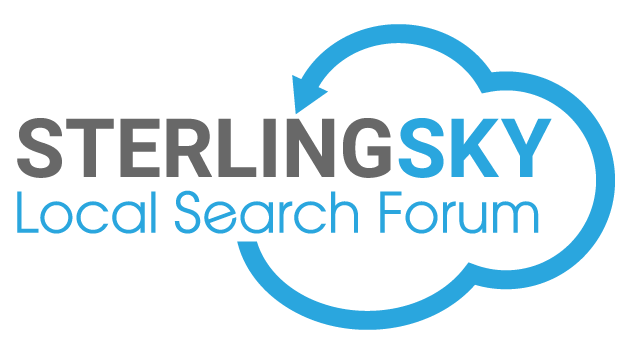Linda Buquet
Member
- Joined
- Jun 28, 2012
- Messages
- 13,313
- Reaction score
- 4,148
How do you rank in other cities outside of the city your office or home office is in??? Since we have this topic come up often, here are a couple new articles by industry leaders I wanted to share. Then my opinions/tips below.
1st up Mike Blumenthal's post from yesterday.
I've cautioned before about adding multiple cities or zips to the service area section as it will put the map marker right in the middle, which could be a rural area or the desert depending. (Not in Mike's example above, but in others it does.)
The other option Mike could test is to simply put the service area as Olean instead of Allegeny.
If he entered Olean with 20 mile radius, that will put his wife's map marker right in the heart of downtown of Olean.
I'm in San Marcos, a little town pretty far north of San Diego. I changed service area to San Diego as a test awhile back and it dropped my map marker right downtown - 30 miles away! If I were a painter that lived out in the burbs but my primary service area was the big metro, it could be advantageous. If someone searched and found me it would show I serve all of San Diego.
As I've said before, I don't believe changing service area setting affects ranking. I don't think I would have ranked in San Diego, just because I changed the service area and I don't think Mike's wife would rank better in Olean just because service area is set there. It just affects that placement of the marker for listings with address hidden.
However if someone is searching in such a way that she shows up on maps, her marker will be right there in the middle of town. Since the link to "more results" is now MIA, more folks may click maps to visually search for services and if she's shows centrally it could help her get more clicks.
Some might wonder if it's a violation to put a different city in the service area settings. My take is that the setting is designed to show consumers the areas you serve, so if that other city IS the primary area you serve, then I don't think it's a problem. But I can't say I know absolutely it would not cause a problem and Google works in mysterious ways, so do your due diligence before trying.
Next up Andrew Shotland's article today at SEland.
I don't work with service area businesses to be in a position to test any of this, but I have heard from pros I trust that using the city you are located in and the circle radius set at 20 miles yields the best results. Going wider won't help you rank in those other cities and some say waters down your ranking for your home city. Again I have not tested to know for sure, but based on what I know, I believe that's the best option.
Tons of great info in both articles. What do you think?
Anything to add or any questions?
1st up Mike Blumenthal's post from yesterday.
Google Local SAB: How to Move Closer to the City
Here are two screen shots to demonstrate the idea of moving an SAB closer to the nearby town even when located in a suburb. My wife’s at home business is located in Allegany NY but her primary business occurs in Olean, 8 miles to north and east of our home. The original choice of radius located the listing to the north of Olean. By changing from the radius to specific zip codes, it effectively moved the pin location to be within the city of Olean.
I've cautioned before about adding multiple cities or zips to the service area section as it will put the map marker right in the middle, which could be a rural area or the desert depending. (Not in Mike's example above, but in others it does.)
The other option Mike could test is to simply put the service area as Olean instead of Allegeny.
If he entered Olean with 20 mile radius, that will put his wife's map marker right in the heart of downtown of Olean.
I'm in San Marcos, a little town pretty far north of San Diego. I changed service area to San Diego as a test awhile back and it dropped my map marker right downtown - 30 miles away! If I were a painter that lived out in the burbs but my primary service area was the big metro, it could be advantageous. If someone searched and found me it would show I serve all of San Diego.
As I've said before, I don't believe changing service area setting affects ranking. I don't think I would have ranked in San Diego, just because I changed the service area and I don't think Mike's wife would rank better in Olean just because service area is set there. It just affects that placement of the marker for listings with address hidden.
However if someone is searching in such a way that she shows up on maps, her marker will be right there in the middle of town. Since the link to "more results" is now MIA, more folks may click maps to visually search for services and if she's shows centrally it could help her get more clicks.
Some might wonder if it's a violation to put a different city in the service area settings. My take is that the setting is designed to show consumers the areas you serve, so if that other city IS the primary area you serve, then I don't think it's a problem. But I can't say I know absolutely it would not cause a problem and Google works in mysterious ways, so do your due diligence before trying.
Next up Andrew Shotland's article today at SEland.
5 Ways To Rank Outside Of Your Physical Location In Google Places
When you set your service area in the Google Places Dashboard, you are given the option of either using (1) the “Distance from one location,” which sets your service area inside a circle with a specified radius from your location (e.g., 20 miles), or (2) submitting a list of areas served. I see businesses using the circle radius to set their location 90% of the time.
But, there may be an advantage to submitting a list of zip codes instead. When you use the circle, you are basically saying everything within the circle is important, which may dilute your ability to rank anywhere in the circle by spreading yourself too thin, particularly as the radius gets bigger.
If instead, you submit a list of zip codes that are targeted at specific polygons within the circle, this might improve your ability to rank for queries in those polygons. The downside of going this route is you may decrease your ability to rank for queries outside of the polygons.
I don't work with service area businesses to be in a position to test any of this, but I have heard from pros I trust that using the city you are located in and the circle radius set at 20 miles yields the best results. Going wider won't help you rank in those other cities and some say waters down your ranking for your home city. Again I have not tested to know for sure, but based on what I know, I believe that's the best option.
Tons of great info in both articles. What do you think?
Anything to add or any questions?




